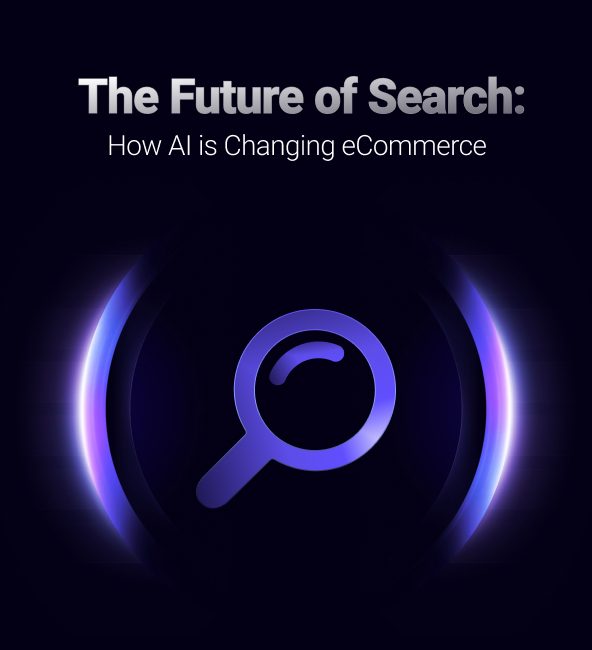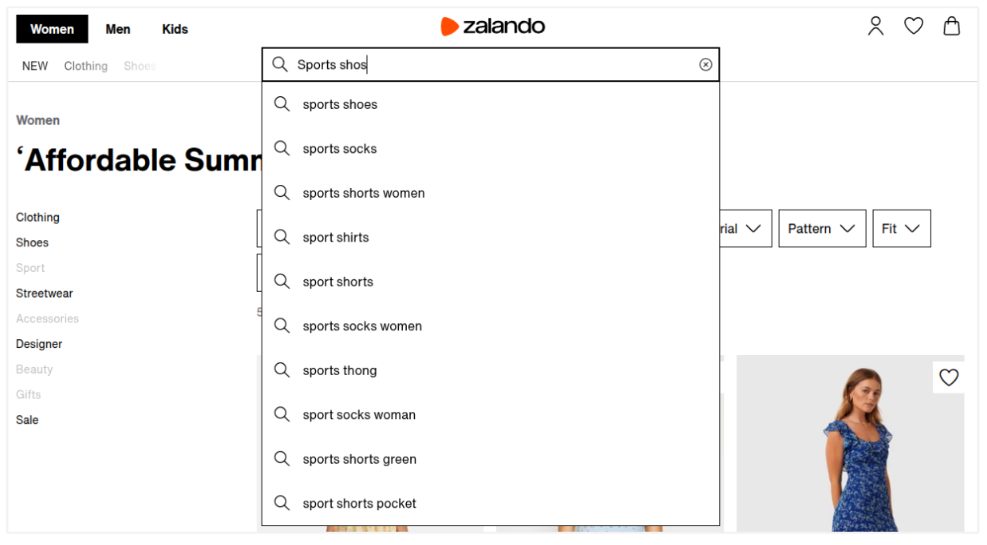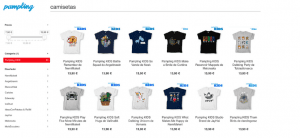Artificial intelligence (AI) has already revolutionized the eCommerce industry—and in 2025, it’s no longer optional. According to McKinsey, over 50% of eCommerce businesses have adopted some form of AI, and those that do report an average revenue increase of 20%, all while reducing operational costs.
From customer service to product discovery and personalized recommendations, AI is enabling smarter decisions, faster operations, and deeply personalized customer experiences. In this article, we’ll explore the most impactful AI tools transforming eCommerce in 2025 and dive into real-world examples and practical ways to integrate them into your business.

The Current State of Artificial Intelligence in eCommerce
AI has been shaping the eCommerce landscape for quite some time now. Its early applications were simple yet effective, focusing primarily on recommendations and search algorithms. Amazon, for instance, was already harnessing AI as far back as the early 2000s.
Fast forward over two decades, and AI has evolved into an essential cornerstone of eCommerce operations. Today, it plays a pivotal role at virtually every customer touchpoint—driving personalized marketing, refining customer segmentation, enhancing smart search capabilities, powering chatbots, and streamlining inventory management.
Moreover, advancements in computer vision are transforming the shopping experience, with features like virtual try-ons and visual search, making online shopping more interactive, engaging, and tailored to individual preferences.
AI Tools for eCommerce Businesses and Their Use Cases
AI tools are transforming eCommerce businesses by offering innovative solutions that enhance customer experience, streamline operations, and drive conversions. Here are key AI tools and their impactful use cases for the eCommerce industry in 2025.
AI-Powered Search and Product Discovery
In today’s fast-paced eCommerce landscape, customers demand seamless, efficient, and personalized shopping experiences. AI-powered semantic search tools are revolutionizing eCommerce by understanding the intent behind customer queries, not just matching keywords.
These tools analyze context and meaning, delivering more accurate and relevant results in real-time, which enhances the shopping experience. By reducing friction and offering personalized product recommendations, AI-driven semantic search boosts conversion rates and increases customer satisfaction, ultimately driving higher sales and loyalty.
Example: Zalando’s AI-powered semantic search understands intent, delivering accurate results even when a typo like “shos” is made instead of “shoes,” improving the shopping experience and boosting conversion rates.

Chatbots and Virtual Assistants
AI-powered chatbots are evolving beyond simple query handling. Today’s chatbots can address complex issues, guide customers through their shopping journey, process orders, and provide 24/7 support. By 2025, AI chatbots will become indispensable in improving customer satisfaction, reducing operational costs, and offering timely support—anytime, anywhere.
Example: H&M. H&M uses an AI-powered chatbot that enhances customer engagement by helping with clothing discovery, order tracking, and returns. The chatbot learns from interactions to provide personalized recommendations based on preferences, sizes, and past behavior, creating a more tailored and enjoyable shopping experience.
AI-Powered Predictive Analytics
Predictive analytics powered by AI is taking personalization to the next level by anticipating customer needs in real-time. By 2025, predictive search will become a staple in eCommerce, allowing brands to offer tailored product suggestions even before the customer completes their search. This ability to predict and deliver relevant options boosts conversion rates and overall customer satisfaction.
Example: Crocs enhances its online shopping experience with AI-powered predictive search that offers real-time suggestions as customers type in the search bar. By analyzing past interactions and browsing behavior, the system predicts and completes searches, helping shoppers find the products they’re looking for more quickly and efficiently.

Personalized Recommendations
Personalized product recommendations have become a core element of the eCommerce experience. By analyzing customers’ browsing behavior, past purchases, and preferences, AI-driven recommendation engines can deliver highly relevant product suggestions, increasing the likelihood of conversions and customer satisfaction. By 2025, personalized recommendations will be integral to every eCommerce strategy.
Example: Blue Banana. Blue Banana, a UK-based fashion retailer, uses AI-powered predictive search to deliver a personalized shopping experience. The system recommends products in real-time based on customer preferences, past interactions, and browsing history.

Voice Commerce
Voice commerce is rapidly gaining traction, allowing customers to search for and purchase products using only voice commands. By 2025, voice commerce will play a significant role in driving conversions, making eCommerce more accessible, and creating more personalized experiences.
Example: Freshly Cosmetics, a Spanish beauty and natural care eCommerce brand, has integrated voice search into its platform. Customers can search for products using voice commands, making it not only faster but also more intuitive to shop. This innovation enhances the user experience, engaging customers in a more natural and accessible way, and ultimately driving increased conversions.
AI-Powered Image Recognition
AI-driven image recognition is transforming online shopping by allowing customers to search for products using images instead of keywords. This breakthrough technology enables consumers to find exactly what they’re looking for with just a snapshot, providing a more interactive and efficient shopping experience. By 2025, AI-powered image recognition will become a vital tool for online retailers.
Example: Prenatal, a leading maternity and baby products retailer, has incorporated AI-powered image recognition into their eCommerce platform. Customers can upload photos of items they’re interested in, and the system instantly recommends similar products available on the site. This enhances product discovery, engaging customers in a more dynamic way and increasing the likelihood of conversion.

Automated Product Tagging
AI-driven product tagging is revolutionizing the way eCommerce businesses categorize and label their products. By automating the process, retailers can improve product discovery, streamline search accuracy, and make the shopping experience more efficient. By 2025, AI-powered tagging tools will be indispensable for any serious online retailer.
Example: Doofinder’s AI Visual Tagging. Doofinder’s AI-powered visual tagging tool automates the process of categorizing products based on their visual attributes. By analyzing images, this tool automatically generates accurate tags for products, such as color, style, and material. This not only ensures a more organized product catalog but also improves the speed and relevance of search results for customers.
AI-Powered Customer Segmentation
AI-powered customer segmentation is transforming how brands engage with their audiences. By analyzing vast amounts of customer data, AI can identify highly targeted segments based on behaviors, preferences, and purchase history, allowing businesses to deliver personalized marketing messages and offers. This leads to higher conversion rates and enhanced customer satisfaction. By 2025, AI-driven segmentation will be crucial for successful eCommerce strategies.
Example: Adidas uses AI-powered customer segmentation to create more personalized experiences for its customers. By analyzing detailed data about past purchases, browsing habits, and customer preferences, Adidas can deliver highly tailored marketing messages, increasing the likelihood of conversions and fostering stronger customer loyalty.
How to Implement AI Tools in Your eCommerce Business
It’s clear that implementing artificial intelligence into your ecommerce business has become indispensable if you want to continue competing in the current competitive landscape. Nonetheless, not all AI tools are made equal, and how to use AI in eCommerce depends on your specific business.
Follow the following steps to investigate what AI tools would be most beneficial for you ecommerce to implement.
Step 1: Identify and Prioritize Customer Pain Points
The first and most crucial step in enhancing your eCommerce experience is to deeply understand where your customers are facing challenges. This means conducting a comprehensive analysis of the entire customer journey—from first interaction to post-purchase.
Use tools such as customer surveys, heatmaps, session recordings, on-site behavior analytics, and customer support transcripts to detect where drop-offs, confusion, or dissatisfaction occur. Focus on identifying repeated patterns of frustration—whether it’s a confusing checkout process, difficulty finding products, or lack of timely support.
Once identified, prioritize pain points based on impact (conversion, revenue, customer satisfaction) and frequency. Tackling high-impact friction points first ensures you’re fixing what matters most.
Pro Tip: Download our free eCommerce Customer Journey Map template to visually identify pain points and uncover hidden bottlenecks in your funnel.
Step 2: Select and Implement the Right AI Tools
With clear insight into your customers’ biggest challenges, you can now align the right AI-powered solutions to the problem. Don’t just implement AI for the sake of it—match the tool to the need.
- If customers are struggling to find products, AI-powered site search tools like Doofinder can drastically improve discoverability and relevance through personalized, intent-driven results.
- If you’re dealing with overwhelmed customer service teams, AI chatbots and virtual assistants can handle routine inquiries, provide instant responses, and even escalate complex issues to human agents.
- Facing cart abandonment issues? Implement AI-driven remarketing tools and personalized product recommendations to re-engage users based on browsing behavior.
When choosing a tool, prioritize ease of integration, customization capabilities, analytics visibility, and scalability.
Pro Tip: Doofinder offers a robust suite of AI solutions—including advanced search, merchandising tools, and real-time data insights. Try it free for 30 days to see tangible improvements in your store’s performance—no strings attached.
Step 3: Monitor, Optimize, and Iterate
AI implementation isn’t a one-and-done process—it’s an evolving strategy. After deploying any tool, actively monitor its performance. Use built-in analytics to track KPIs such as:
- Conversion rate improvements
- Search success rate
- Time on site
- Support ticket deflection
- Customer satisfaction (CSAT) scores
The best AI tools offer granular data that helps you understand what’s working and where to fine-tune. For example, Doofinder’s AI search provides real-time reports on popular searches, zero-result queries, and click-through behavior—giving you insights to continually optimize your product listings, tags, and overall UX.
Don’t be afraid to experiment and iterate. AI tools are highly adaptable—adjust parameters, run A/B tests, and explore new features to extract maximum value.
Pro Tip: Set a review schedule (e.g., monthly or quarterly) to evaluate tool performance against KPIs and update your strategy as your customer behavior and business goals evolve.

Conclusion
Incorporating AI into your eCommerce business offers a wealth of advantages, far outweighing the few potential challenges. The technologies mentioned earlier can be seamlessly integrated using Doofinder’s advanced Search and Discovery tools, which are specifically designed to optimize your online store’s performance.
If you’re unsure where to begin, Doofinder provides an easy and effective solution to enhance your search functionality and overall customer experience. With Doofinder, businesses have seen a remarkable 19% improvement in conversion rates, demonstrating its powerful impact. By embracing AI-driven tools like Doofinder, you can not only streamline your operations but also create a more personalized and engaging shopping experience that drives growth and customer satisfaction.
Frequently Asked Questions
AI systems often require access to large datasets, including customer personal and payment information. If not properly secured, this data is vulnerable to breaches, which can result in identity theft, financial fraud, and loss of consumer trust.
Doofinder addresses security concerns by prioritizing data privacy and protection with robust encryption and GDPR compliance. They ensure that only necessary data is collected and anonymized where possible to minimize risks.
The long-term impacts of AI on the eCommerce workforce include job automation, where repetitive tasks like customer service, inventory management, and pricing optimization may be automated, potentially displacing some roles. However, AI will also create new job opportunities, such as data scientists, AI engineers, and ethical officers. Workers will likely need to reskill or upskill to work alongside AI, adapting to new roles that require expertise in data analysis, AI tools, and customer insights.
AI-powered personalized recommendations increase conversion rates on eCommerce sites by offering tailored shopping experiences. AI analyzes customer behavior, such as past purchases and browsing history, to suggest products that align with individual preferences. This increases the likelihood of purchases by making the shopping experience more relevant. Additionally, AI drives upselling and cross-selling by recommending complementary products, thus boosting average order value.








